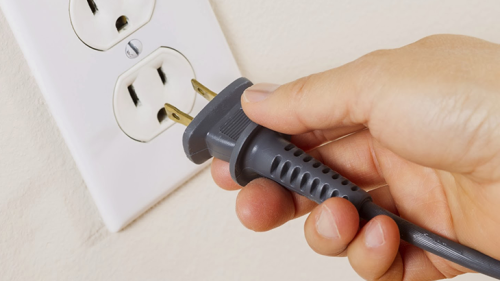The Occupational Safety and Health Administration (OSHA) is tasked with enforcing safety and health requirements in the workplace. OSHA Compliance Safety and Health Officers are highly trained industrial hygienists and safety professionals. Their goal is to assure compliance with OSHA requirements and help employers and employees reduce on-the-job hazards. This helps achieve the ultimate goal of preventing injuries, illnesses, and deaths in the workplace.
Most OSHA inspections are conducted without advance notice, making it a good idea for your company to pre-plan a strategy in the event of an inspection. Employers have the right to require compliance officers to obtain an inspection warrant before entering the worksite. Rest assured, they will return.
OSHA priorities
Before we discuss what to do when they show up, let’s first examine how they got to your door in the first place. OSHA cannot inspect all seven million workplaces it covers each year. Instead, the agency tends to focus inspections on the most hazardous workplaces in the following order of priority:
- Imminent danger situation – Hazards that could cause death or serious physical harm receive top priority. Compliance officers will ask employers to correct these hazards immediately or remove endangered employees.
- Fatalities and catastrophes – These are incidents that involve a death or the hospitalization of three or more employees. Employers are required to report such catastrophes to OSHA within eight hours.
- Complaints – Allegations of hazards or violations also receive a high priority. Employees may request anonymity when they file complaints.
- Referrals – Hazard information provided from other federal, state, or local agencies; individuals; organizations; or the media receive consideration for inspection.
- Follow-ups – Checks for abatement of violations cited during previous inspections also are conducted by the agency in some circumstances.
- Planned or programmed investigations– Inspections aimed at specific high-hazard industries or individual workplaces that have experienced high rates of injuries and illnesses receive priority.
All complaints are prioritized based on perceived severity. With permission from the complainant, OSHA may choose to contact the employer via telephone for low priority hazards. The compliance officer will describe the safety and health concerns and follow up with a fax providing details about alleged safety and health hazards. The employer must respond in writing within five working days, identifying any problems found and noting corrective actions taken or planned.
If the response is adequate and the complainant is satisfied with the response, OSHA generally will not conduct an on-site inspection. It is important to provide a thorough response in a timely manner. Providing evidence of compliance, such as photographs, training documentation, etc., also will help to close the case without an on-site inspection.
Preparation
Before conducting an inspection, OSHA compliance officers research the inspection history of a worksite using various data sources, and review the operations and processes in use and the standards most likely to apply. They gather appropriate personal protective equipment and testing instruments to measure potential hazards.
Presentation of credentials
The on-site inspection will not begin until the compliance officer has provided the employer with his credentials, which include a photograph and serial number. Do not begin the opening conference or inspection process until the appropriate management personnel are present.
Train receptionists and facility guards on the process in the event a compliance officer arrives.
Opening conference
The compliance officer will explain why OSHA selected the workplace for inspection and describe the scope of the inspection, walk-around procedures, and employee representation and interviews. The employer then selects a representative(s) to accompany the compliance officer during the inspection.
An authorized representative of the employees, if any, also has the right to go along. In any case, the compliance officer will consult privately with a reasonable number of employees during the inspection.
At the opening conference, it is a good idea to obtain a copy of the complaint. The complaint will not contain the name of the complainant. Do not comment about the reason for the complaint or the person you believe made the complaint. Employees who have registered safety complaints are protected from discrimination or retaliation by their employer under the OSH Act.
If OSHA plans to hold an industrial hygiene inspection, determine what tests or monitoring OSHA will conduct, and ask about the intended test procedures. Find out the number of individuals tested, equipment being used, chemicals being sampled, and duration of the test.
If able, you should do simultaneous testing to verify the accuracy of the results. The compliance officer may agree to defer testing to a later date if you ask to conduct simultaneous testing.
Walk-around
After the opening conference, the compliance officer and representatives will walk through the portions of the workplace covered by the inspection, checking for hazards that could lead to employee injury or illness. The compliance officer also will review worksite injury and illness records, and posting of the official OSHA poster.
During the walk-around, compliance officers may point out some apparent violations that you can correct immediately. While the law requires that these hazards must be cited, prompt correction is a sign of good faith on the part of the employer. Compliance officers try to minimize work interruptions during the inspection and will keep confidential any trade secrets they observe.
Employee representatives should define areas that the inspector will need to see and restrict the visit to those areas or departments. Determine the route to the designated areas before escorting the compliance officer to the destination. Compliance officers can cite any violation they find in “plain view,” no matter the purpose of the inspection.
Do not offer a facility tour to the compliance officer.
Assign at least one of the employee representatives to take notes, photographs, and/or video during the inspection. Notes should include all observations made by the inspector, departments visited, equipment inspected, and individuals interviewed.
Take a photo of any item photographed by the compliance officer. If the photo is of an isolated violation, take photos of similar areas that do not share the same violation. If the compliance officer requests a copy of records or documents, make additional copies to keep with your inspection file.
Closing conference
After the walk-around, the compliance officer holds a closing conference with the employer and the employee representatives to discuss the findings. The compliance officer discusses possible courses of action an employer may take following an inspection that could include an informal conference with OSHA or contesting citations and proposed penalties. The compliance officer also discusses consultation and employee rights.
The closing conference may be delayed based on the size of the inspection or testing results. This also is the time to promote company safety programs and the company’s commitment to employee safety and health. Showing good faith and a dedication to safety can help reduce potential penalty amounts. Be careful about setting abatement dates, and allow ample time to correct the violations. Point out factual mistakes and discuss disputes, but do not argue with the compliance officer.
Results
OSHA must issue a citation and proposed penalty within six months of the violation’s occurrence. Citations describe OSHA requirements allegedly violated, list any proposed penalties, and provide a deadline for correcting the alleged hazards.
Violations are categorized as other-than-serious, serious, willful, repeated, and failure to abate. Penalties may range up to $7,000 for each serious violation and up to $70,000 for each willful or repeated violation. Penalties may be reduced based on an employer’s good faith, inspection history, and size of business. For serious violations, OSHA also may reduce the proposed penalty based on the gravity of the alleged violation. No good faith adjustment will be made for alleged willful violations.
Appeals
When OSHA issues a citation to an employer, it also offers the employer an opportunity for an informal conference with the OSHA Area Director to discuss citations, penalties, abatement dates, or any other information pertinent to the inspection.
The agency and the employer may work out a settlement agreement to resolve the matter and to eliminate the hazard. OSHA’s primary goal is correcting hazards and maintaining compliance rather than issuing citations or collecting penalties.
Alternatively, employers have 15 working days after receipt of citations and proposed penalties to formally contest the alleged violations and/or penalties by sending a written notice to the Area Director. OSHA forwards the contest to the Occupational Safety and Health Review Commission for independent review.
Citations, penalties, and abatement dates that are not challenged by the employer or settled become a final order of the Occupational Safety and Health Review Commission.
The ultimate goal
We know that employee safety is your number one priority. The regulations and guidelines provided by OSHA provide a great framework for achieving that goal.
Full compliance is possible by following these inspection guidelines and implementing any changes recommended by the compliance officer.






